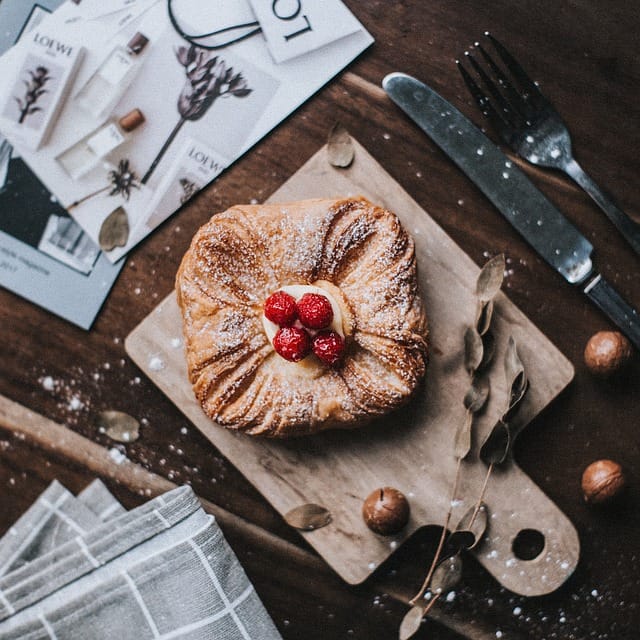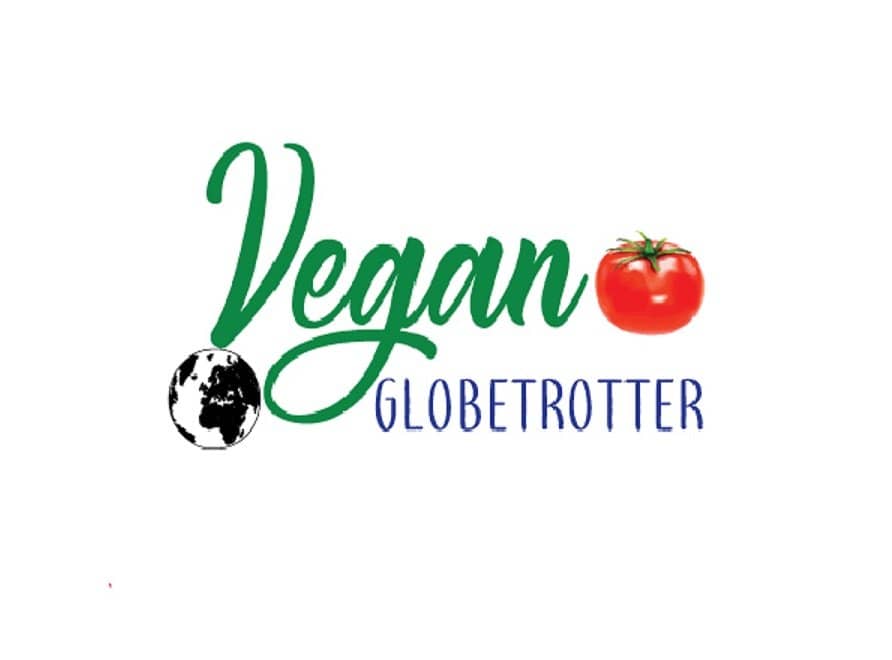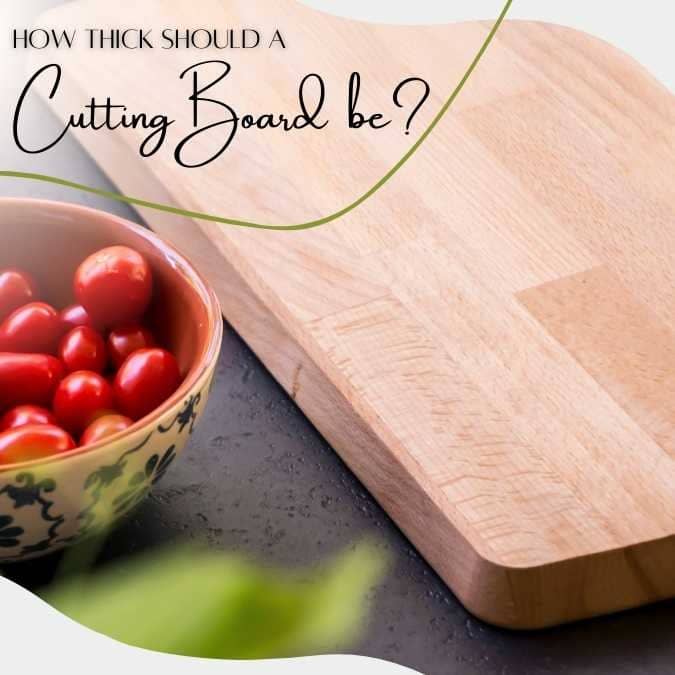Vegan Globetrotter is supported by our audience. When you purchase through one of our links, we may earn a small affiliate commission. As an Amazon Associate I earn from qualifying purchases. Your cost is not affected.
==================
Have you ever wondered, “how thick should a cutting board be?” It’s a question that every home cook has likely pondered at some point. And while it may seem like a small detail, the thickness of your cutting board can actually make a big difference in your cooking experience. A cutting board that’s too thin can be flimsy and unstable, leading to uneven cuts and potential injuries. On the other hand, a board that’s too thick can be heavy and cumbersome to use, making meal prep feel like a chore. So how do you strike the right balance? Let’s dive in and explore the pros and cons of different cutting board thicknesses.
How Thick Should a Cutting Board Be?
Does it matter how thick a cutting board is? Many people wonder about this before they go out and buy a cutting board. Since, after all, it’s natural to equate girth with sturdiness. When shopping for a new cutting board, most of us take the board’s dimensions into account first. Product upkeep and use are two examples that spring to mind. Getting a piece that appropriately occupies our available area is prudent. Okay, but what about the stature? How deep should a cutting board be? Should we care?
The appropriate equipment is crucial for any vegan chef. Do you know, for instance, that the longevity and quality of whatever you prepare depends on the thickness of your cutting board? Because of this, you should not settle for any old cutting board; instead, you should select one appropriate for the job.
How Thick Should a Cutting Board Be? Choosing the Best Kind
There are a few factors to consider when it comes to cutting boards. First, your new cutting board needs to fit your kitchen counter space. What good is a board that is just too large to use? But a small cutting board might only work for some of your needs.
What is the Best Cutting Board Size?
If you’re looking for one built to last, go for a thicker board – its durability is directly linked to its thickness. Solid materials are less likely to get scratched or dented, so bigger boards are the safer bet. A thicker board will hold up better over time without warping or cracking. Just remember that it’ll be a bit heavier since it’s stronger. But if density matters to you, it’s worth checking out.

How Thick Should a Cutting Board Be by Its Weight?
The heavier weight is a significant deciding factor for those of us needing a board we can easily lift to clean and move around for use. I love the looks of a thick chopping board. But my cutting boards are not nearly that thick. I just can’t manage the extra weight.
Another factor to consider is the type of food you will be preparing. As plant-based cooks, we tend to work with a lot of fruits and vegetables, which are generally softer than meat or fish. And in our home, we use the board for freshly baked bread and pastries, too.
This means a thinner cutting board may be more appropriate for your needs. A thinner board provides a stable surface for slicing and dicing while also being easier to handle and clean.
When Is the Board Size Too Thin?
With a wooden cutting board, the thickness helps ensure wearability. A very thin board might warp or even crack with use.
Cutting Board to Serving Board, Using as Serving Trays
If you’re into serving food directly on the board, then you might prefer a thinner cutting board since it’s lighter and easier to handle. A lot of cutting boards these days can even double as charcuterie boards, which is a nice bonus. Personally, we have a few different cutting boards at home, and they all work great as serving trays too. It’s nice to have something that looks just as good with veggies and appetizers as it does with a slab of meat.
So, How Thick Should a Cutting Board Be? Explain Thickness.
From my own experience, the ideal thickness for a cutting board is around 1 to 2 inches. Some cooks prefer up to a 2.5-inch thick board. And I know friends who love their cutting boards that are only half an inch thick.
But for me, the 1 to 2-inch board performs best. This thickness provides a good balance between durability and maneuverability. But it also provides a stable surface for slicing and dicing. Thicker cutting boards usually are more durable. But they weigh more and many people, including myself, find them harder to handle. So, while thinner cutting boards prove more prone to warping or cracking over time, the 1 to 2-inch board works best for most of us.
But thickness is not the only factor to consider. Besides the thickness, you need to consider the material of the cutting board. Many options exist, including wood, bamboo, or plastic.
Wooden Cutting Boards
Wooden cutting boards are popular among vegan cooks because they are natural and easy to maintain. They provide the best material for keeping food safe from harmful bacteria, too.
If you choose the right type of wood, these cutting boards are safest for your knife blade, too. Choose a durable maple, walnut, or cherry wood. Avoid pine and other softwoods as they won’t stand up to continued use.
Some types of wood are more water resistant than others, but keeping them clean and conditioned using mineral oil or another food-safe option helps.
Wood Cutting Boards in All Shapes
Almost all types of wood cutting boards come in a variety of thickness choices. Consider these options
- Grain
- End Grain cutting boards
- Edge grain cutting boards
- Face grain
- Shape and Style
- rectangular boards
- round cutting boards
- specialty shapes including hearts, dog bones, or whatever you like!
- Size
- small cutting board
- larger cutting board
- Thickness
- thin cutting board
- thick cutting board
- butcher blocks (usually very thick wooden cutting boards)
- Other Options
- juice groove – to help catch any juice that might drip from food particles being cut.
- catch drawer – slides out to catch trimmings from fruit and vegetables
- feet – help provide stability as you cut and also keep the board slightly off the surface to allow ease in drying.
- reversible – provides a second cutting surface area.
- engraved – adds to the beauty and often included with a gift purchase.
Bamboo Is Nice, But
Bamboo cutting boards are also a popular choice because they are sustainable and eco-friendly. But, they are hard on knives. In fact, even the best knives quickly lose that sharp cutting edge with bamboo. I recommend avoiding it for cutting boards. They do work well for charcuterie boards, though.
Plastic as a Cutting Board
Plastic cutting boards are a cheap option for those who prefer easy cleaning and low cost. They are light weight and often have pretty designs and colors. But plastic is hard on knives, like bamboo is. And I worry about the shreds of plastic getting into my food. Also, plastic damages easily, causing little spaces for bacteria to build up within.
The Flexible Silicone Boards
I like the silicone board option for its lightweight and easy cleaning surface. But, they don’t stand up to constant use like my wood cutting boards. And honestly, I just think the wood cutting board looks nicer!
Which Cutting Board Sizes Should You Choose?
Ultimately, the thickness of your cutting board depends on your personal preferences and cooking needs. As a vegan cook, a thinner cutting board may be more appropriate for your needs. But don’t sacrifice durability for maneuverability. Choose a cutting board that is both durable and easy to handle. Then you’ll be able to enjoy your vegan cooking for years to come.
When it comes to cooking, choosing the right cutting board can make a big difference in the quality of your meals. But you know what else is super important? Having access to good vegan cooking resources! That’s why I wanted to give a shoutout to our vegan blog – it’s seriously a treasure trove of delicious and healthy plant-based recipes that will knock your socks off.
But it’s not just recipes, either. The blog is packed with helpful cooking tips and tricks that will take your skills to the next level. Whether you’re a seasoned vegan chef or just starting, there’s something for everyone there. Trust me; you don’t want to miss all the fantastic dishes and techniques waiting for you!
Happy cooking, and be sure to check it out!
Interesting Articles Beyond Cutting Boards
This Hack Makes Cutting Hard Butternut Squash a Breeze
FAQs
How thick should a cutting board be for general use in the kitchen?
For general use in the kitchen, a cutting board that is around 1 inch thick is a good choice. This thickness provides a good balance between stability and maneuverability. The said features allow you to cut and chop with ease. Also, it helps while being sturdy enough to stay in place on your countertop.
Is a thicker cutting board always better?
Not necessarily. While a thicker cutting board may seem sturdier, it can be more cumbersome. After all, it may demand more effort to move around. Additionally, wider cutting boards may be more prone to warping or cracking over time. They are susceptible to issues when manufacturers use certain materials. Ultimately, the thickness of your cutting board should depend on your cooking preferences and needs.
As a vegan cook, does the thickness of my cutting board matter?
As a vegan cook, the thickness of your cutting board may depend on the types of foods you typically prepare. A thinner cutting board may be more appropriate for primarily working with fruits, vegetables, and other plant-based ingredients. This can make maneuvering around your produce and making precise cuts easier. But, it’s still important to choose a cutting board that is both durable and easy to handle, regardless of thickness.












Don't miss out
when new recipes and information are added!
Join our newsletter for free recipes,
healthy living inspiration, and special offers
You have Successfully Subscribed!